Interesting phenomena associated with nuclear explosions
Summary. Images of nuclear explosions extracted from a video were examined after equalization to bring out more detail. A number of interesting features were identified that do not have obvious explanations. Specifically, the plasma from an explosion occasionally contains small dark circular areas similar to several found in an image of the sun's corona. Further, the explosions can have spatial and spectral asymmetries and are often accompanied by smaller toroidal shapes.
The declassified U.S. Nuclear Test Film #70 video shows a number of nuclear explosions in tests conducted during the 1950s. Frames were extracted from the video and enhanced to show any structure present in the mushroom cloud and immediate environment. One explosion was also taken from a video from BrainMind.com. Several classes of anomalies were noted; in particular, dark spots, spatial and spectral asymmetries, and a number of details having toroidal shapes.
Please click on an image to see it in it's original size.
Dark spots:
In a number of frames, dark circular spots are visible in the ball of plasma accompanying the nuclear explosion. It is hard to imagine why such a dark spot should appear inside a region of incandescent plasma. Perhaps the light emitted is not in the spectral range of the camera, or there is no light emitted at all from these holes.
Figure 1. Examples of dark spots
| Original |
Enhanced |
Comments |
 |
 |
A spot appears near the edge of the expanding plasma of a nuclear explosion. |
 |
 |
Again, a spot appears on the lower edge of the expanding plasma ball and persists for almost 10 seconds. |
 |
 |
This spot appeared in the cloud resulting from an underwater nuclear explosion. |
 |
 |
Two spots appear near a nuclear fireball. Since these spots remain in the same vicinity for a second or more, it is unlikely that they were spots of dirt on the film. Further, there is a suggestion in the enhanced image that the spots are each the center of a torus. |
 |
 |
Time 17:54a. This image shows a spot near a flare on the surface of the sun. The spot lasted less than a second but appeared briefly again several times in nearby locations as shown in the following images. There is a suggestion that each spot is actually the center of a torus, and this argues against the spots being film defects. Further, their proximity could mean that conditions conducive to their creation existed in the region of space near the flare. |
 |
 |
Time 17:54b. This image shows the area immediately after the disappearance of the above spot. In the enhanced image, a residual pattern in the same location is still faintly visible, and this is true for the following images as well. An aftereffect should not be there if the dark spot in the previous frame of the film were due to a defect. |
 |
 |
Time 17:58a. This image shows the second spot that appeared about 4 seconds after the previous spot had disappeared. The torus shape around the spot is more evident here. |
 |
 |
Time 17:58b. This image shows the area after the disappearance of the second spot. |
 |
 |
Time 17:59a.This image shows the third spot that appeared briefly about a second after the second spot had disappeared. These spots near the surface of the sun are similar to the spots in the nuclear explosions, and may be caused by an underlying process common to both. |
 |
 |
Time 17:59b. This image shows the area immediately after the third dark spot disappeared. |
Spectral asymmetry:
In several places, the color of the exploding fireball appears to by asymmetric. Some parts of the fireball are more red than blue, while the converse is true for other parts. The red and blue channels of the images were enhanced to show how each color varies in brightness over the whole image.
Figure 2. Examples of spectral asymmetry
| Original |
Red Enhanced |
Blue Enhanced |
Comments |
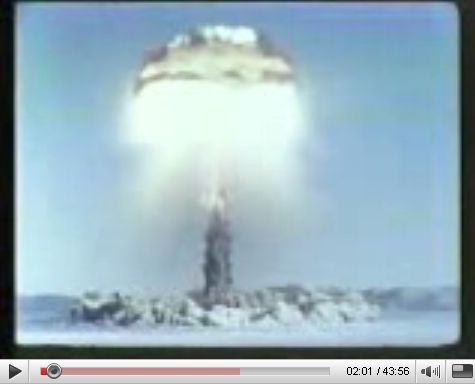 |
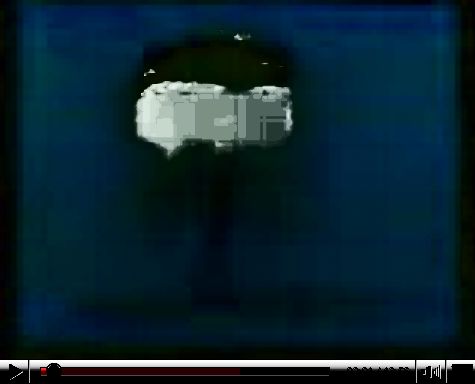 |
 |
The side view of this explosion shows that the brightness of the plasma is biased toward the left side in the red channel, and toward the right in the blue channel. |
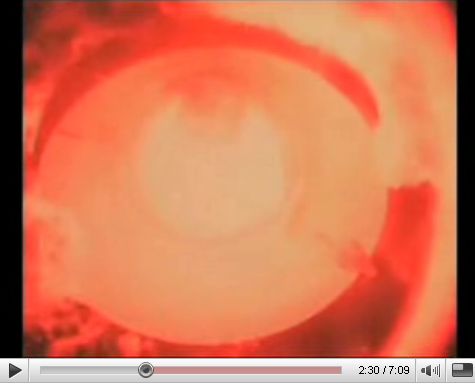 |
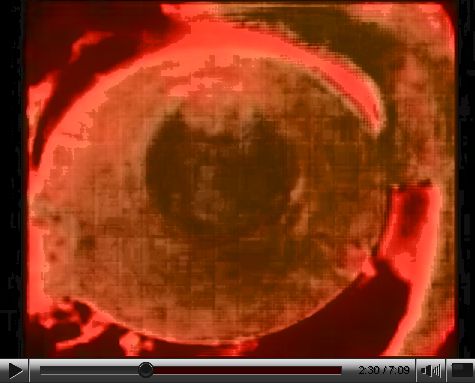 |
 |
The top view of this explosion shows that the light spectrum at the center of the ring tends toward the blue, while half of the ring is bluer than the other half. The latter is consistent with the previous image where the asymmetric color of the ring is seen from the side. |
Spatial asymmetry:
In a number of images, the spatial distribution of brightness is asymmetric about the vertical axis. There is no obvious reason why this should be. Perhaps an asymmetric shock wave is generated by the beginning of the explosion, and this wave drives material away from the center.
Figure 3. Examples of spatial asymmetry
| Original |
Enhanced |
Comments |
 |
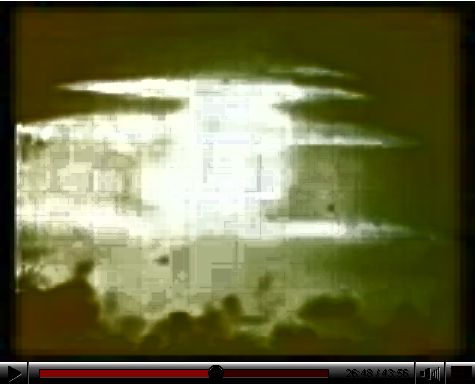 |
The left side of the explosion is brighter than the right side, and appears to contain a toroidal pattern. |
 |
 |
This explosion also has more material on the left side. |
 |
 |
The shape of this explosion is symmetrical, but the brightness distribution is not. |
 |
 |
This image followed the preceding one by 5 seconds, and shows that the brighter side persists. It now appears that it may be in the shape of a torus viewed from the edge. |
 |
 |
Another image where there appears to be more or brighter plasma material on the center-left than on the center-right. |
Toroidal details:
The ball of plasma in the nuclear explosion often takes the shape of one or more huge tori centered on the vertical axis. On closer examination, many smaller tori can also be seen at other apparently random locations.
Figure 4. Examples of toroidal shapes
| Original |
Enhanced |
Comments |
 |
 |
Several donut shapes are positioned on the darker side of the mushroom cloud. |
 |
 |
A toroidal shape is attached to the left side of the main torus. |
 |
 |
The left side of the main ring is itself composed of face-to-face tori. |
 |
 |
This image shows the aftermath of an explosion where the cloud material is drifting away. In the enhanced image, a donut shape is still visible in the atmosphere to the left of the cloud. |
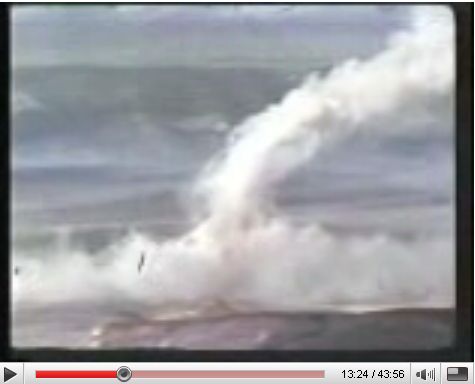 |
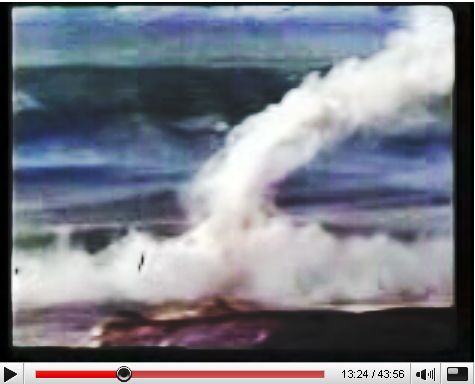 |
This image shows a similar explosion aftermath. In the enhanced image, a toroidal shape is again visible in the atmosphere to the left of the cloud. |
 |
 |
This image shows an underwater explosion. On the side of the material ejected from the water, several tori are visible in the enhanced image. |
 |
 |
A smaller torus is positioned vertically above the hole of the main torus. |
 |
 |
One or more tori are asymmetrically positioned on the top of the mushroom cloud. |
 |
 |
A ring composed of multiple face-to-face donut shapes is positioned on the top of the mushroom cloud. |
 |
 |
A torus, positioned at about a 45-degree angle from the horizontal, is located near the center of the image. Blast material appears to extend through its hole from the layer below. In the enhanced image, an overlaid circle identifies the torus and this material. Click on the image to see a larger view. |
 |
 |
Several donut shapes are positioned side by side on the far side of the main cloud, and may be part of it. Click on the image to see a larger version. |
Index



















